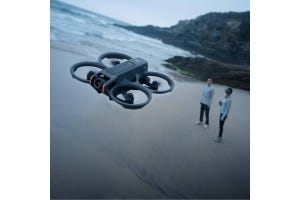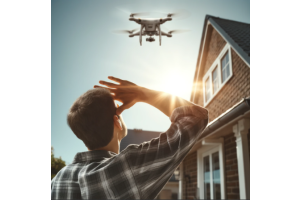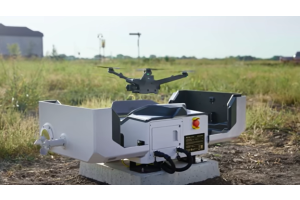
DJI, the leading drone manufacturer, recently introduced an upgrade to the flagship Matrice 300 RTK (M300 RTK) model – the next generation Matrice 350 RTK (M350 RTK). In this article, we will delve into the differences between the M300 and M350 drones and explore the exciting new features offered by the latest iteration.
DJI M350 RTK vs DJI M300 RTK: Summary Comparison
Here is a quick overview:
Differences of the enterprise drones
- Upgraded IP Rating: M350 has an IP55 rating for enhanced dust protection, while M300 has an IP45 rating with limited dust resistance.
- Remote Controller: M350 comes with the RC Plus, featuring a large 7.02-inch screen, extended battery life, dual operator functionality, and an improved design. M300 uses the DJI Smart Controller Enterprise as its standard remote controller but can be made compatible with RC Plus through a firmware update.
- Enhanced FPV Camera: M350 has an improved night-vision FPV camera with 1080p resolution, surpassing the 960p resolution of M300.
- Batteries: M350 uses TB65 Intelligent Flight Batteries rated for 400 power cycles, while M300 uses TB60 batteries rated for 200 charge cycles. M350 also introduces the TB65 Battery Station for efficient battery management.
- Improved Transmission System: M350 incorporates the DJI O3 Enterprise transmission system, offering a range of up to 20km, surpassing M300's 15km range. It includes improved anti-interference algorithms, 5.2GHz transmission (CE region), and a 4-antenna design for faster media download.
- Integrated Arm Lock Indicator: M350 has an arm lock indicator to enhance flight safety, which is absent in the M300.
- New GNSS/GPS Chip: M350 features an improved GNSS chip, allowing better reception, tracking of additional satellite signals (GPS L5 and BeiDou B3), and increased positioning accuracy.
- New Aircraft and Battery Cases: M350 introduces a smaller hard case (31% smaller) with four universal wheels and the BS65 battery station for improved portability.
Similarities of the DJI M350 RTK and DJI M300 RTK
- Support for DJI's Zenmuse payloads.
- Use of RC Plus controller (M300 with firmware update).
- Both can share batteries and battery stations through firmware updates.
- M350 compatible with M300's propellers and third-party payloads.
The M350 offers various upgrades compared to the M300 but is not necessarily a replacement for existing M300 owners. It provides an appealing option for those seeking a new enterprise-grade drone, with more power and capacity.
DJI M350 RTK vs DJI M300 RTK: In-Depth Comparison
Let’s dig deeper into how the enterprise drones stack up against each other:
New Features & Key Upgrades
DJI's M300 RTK has set the pace in the commercial drone sector since its launch. Can the M350 RTK dethrone it? The newcomer to the stage pushes the boundaries of drone technology and is a strong contender for the top spot. Here’s how the evolution is playing out:
1. Upgraded IP Rating: Enhanced Dust Protection
The M350 RTK boasts an upgraded IP55 rating, providing enhanced resistance against dust during flights. This improved IP rating sets it apart from its predecessor, the M300 RTK, which has an IP45 rating. The IP ratings signify the level of protection against solids (first number) and liquids (second number). While both models offer the same water resistance, the M350 excels in dust protection.
With the M350's IP55 rating, it demonstrates a higher level of robustness in challenging environments. The increased protection against solid objects greater than 1mm, such as screws and wires, ensures that the drone remains operational even in dusty conditions. This enhanced dust protection is particularly valuable for industries like construction, mining, and inspection, where drones are exposed to airborne particles that can compromise performance and durability.
The M300 RTK, with its IP45 rating, offers weather protection but falls short in terms of the same level of robustness as the M350. While it can withstand low-pressure jets of water from any angle, its resistance to dust is limited. This distinction makes the M350 RTK a more suitable choice for operations in dusty environments where maintaining the integrity of the drone's components is crucial.
2. Remote Controller: Introducing RC Plus
The M350 now comes equipped with the 'awesome' RC Plus, DJI's latest remote controller designed for professional drone operations. This cutting-edge controller is used with DJI's M30 and M30T series and offers an array of impressive features. With a large 7.02-inch screen size and a brightness of 1,200 cd/m2, the RC Plus ensures excellent visibility even in bright sunlight, providing pilots with a clear and detailed view of the drone's flight and camera feed.


The RC Plus comes with a durable construction and an IP54 rating, making it resistant to dust and light splashes of water, allowing it to perform reliably in various challenging environments. Its robustness is further enhanced by its operational temperature range of -20°C to 50°C, ensuring optimal performance even in extreme weather conditions.
One of the notable advantages of the RC Plus is its extended battery life. With an internal battery that lasts up to 3.18 hours (6 hours with an external battery), pilots can enjoy longer flight sessions without the need for frequent recharging. This feature is especially beneficial for professional applications that require extended flight durations.
The RC Plus also supports dual-operator functionality, enabling collaboration between a pilot and a camera operator, enhancing the efficiency and flexibility of aerial missions. With its ergonomic design and intuitive controls, the RC Plus offers a seamless and user-friendly piloting experience.


While the M300 comes with the DJI Smart Controller Enterprise as its standard remote controller, the M300 can be made compatible with the RC Plus through a firmware update. This allows M300 users to leverage the advanced features and benefits offered by the RC Plus without the need for additional equipment.
3. Enhanced FPV Camera: Improved Visibility
Both the M300 and M350 drones come equipped with built-in FPV cameras, but the M350 takes it a step further with its enhanced night-vision FPV camera. This feature proves to be invaluable during low-light and night missions, providing enhanced visibility and ensuring safer flights. The M350's FPV camera also boasts a higher resolution of 1080p, surpassing the 960p resolution offered by the M300.
The night-vision capability of the M350's FPV camera allows pilots to have a clear view of their surroundings and identify potential obstacles, even in dark environments. This advanced feature significantly enhances situational awareness and enables more precise navigation and maneuvering. Industries such as surveillance, search and rescue, and inspection will greatly benefit from the improved visibility provided by the M350's FPV camera, especially in challenging lighting conditions.


Additionally, the higher resolution of the M350's FPV camera ensures sharper and more detailed video feed, enabling operators to capture high-quality footage during their missions. This enhanced level of clarity is particularly useful for applications that require close examination or analysis of captured images.
With the combination of night-vision capability and higher resolution, the M350 sets itself apart as an ideal choice for professionals seeking improved visibility and enhanced image quality in their aerial operations. Whether it's conducting inspections in dimly lit areas or performing surveillance tasks during nighttime, the M350's enhanced FPV camera ensures that pilots have a reliable and clear view of their surroundings, ultimately enhancing the overall effectiveness and safety of their missions.
4. Batteries: Introducing TB65s
Battery health and charge cycles are crucial for maintaining a drone fleet. The M350 and M300 models utilize different battery systems. The M350 is equipped with the TB65 Intelligent Flight Battery, while the M300 uses the TB60 intelligent flight battery. Both drones offer a flight time of 55 minutes (without payload). However, the TB65s, used in the M350, have a significant advantage over the TB60s in terms of longevity and efficiency.
The TB65s are rated for 400 power cycles, which is twice as many as the TB60s rated for 200 charge cycles. This means that the TB65s can handle a greater number of charge cycles before needing replacement, making them a more cost-effective and reliable choice for prolonged operations. The improved battery life and durability offered by the TB65s ensure that drone operators can maximize their flight time and reduce downtime due to battery replacements.
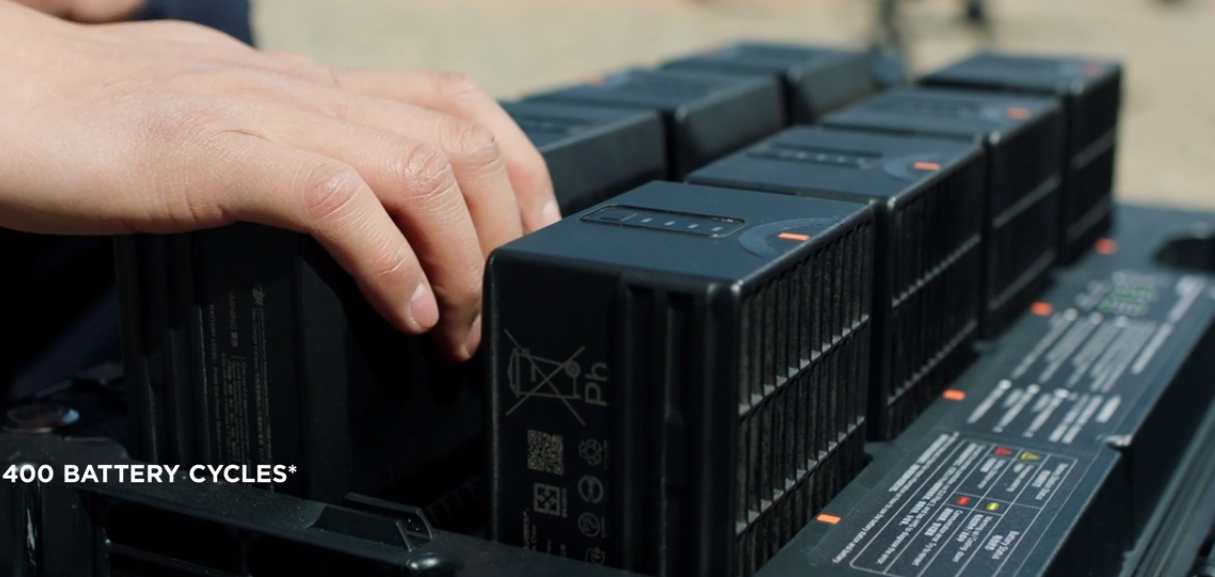

Moreover, the M350 introduces a new battery station, the TB65 Battery Station, which further enhances the efficiency and convenience of battery management. This battery station features multiple charging ports and supports different charging modes, providing flexibility and customization options for users. With eight TB65 battery ports and four WB37 battery ports, the TB65 Battery Station can accommodate multiple batteries simultaneously, streamlining the charging process and reducing overall downtime.
The TB65 Battery Station is designed with user convenience in mind. It includes a USB-C maintenance port and two USB charging ports (one USB-C and one USB-A), allowing users to charge their devices or perform maintenance tasks conveniently. Additionally, the battery station supports various charging modes, including the standard mode for general users and the ready-to-fly mode, which is especially great for first responders. These different modes provide flexibility based on specific operational needs, ensuring efficient and tailored battery management.
The introduction of the TB65 Intelligent Flight Battery and the TB65 Battery Station in the M350 offers significant advantages over the previous battery system used in the M300. The TB65s' increased lifespan, efficiency, and the convenience provided by the TB65 Battery Station make the M350 a reliable and cost-effective solution for professionals in need of extended flight time and efficient battery management.
5. Improved Transmission System: DJI O3 Enterprise
The DJI M350 RTK incorporates the new DJI O3 Enterprise transmission system, which represents a significant upgrade over the previous O2 Enterprise system used in the M300 RTK. With the O3 system, the M350 is capable of transmission up to 20km, surpassing the 15km range of the M300. This enhanced transmission capability opens up new possibilities for drone operations, allowing users to cover larger areas and reach more distant locations.
The DJI O3 Enterprise transmission system introduces several improvements that contribute to its superior performance. One notable enhancement is the improved anti-interference algorithm, which ensures a stable and reliable connection between the drone and the remote controller. This algorithm helps to minimize signal interference from external sources, providing a smooth and uninterrupted transmission experience even in challenging environments.
Moreover, the O3 system supports a triple-channel 1080 HD live video feed, delivering high-quality real-time video footage to the pilot. This enhanced video transmission capability allows for better situational awareness, enabling pilots to make informed decisions during flights. The clear and detailed video feed is especially valuable for industries such as surveillance, inspection, and search and rescue, where accurate visual information is crucial.
The O3 Enterprise transmission system also supports 5.2GHz transmission (only available in the CE region), which further enhances its versatility and adaptability to different regulatory environments. The availability of the 5.2GHz frequency band provides an additional option for transmission, allowing users in the CE region to optimize their drone operations according to their specific needs.
In terms of hardware, the M350 features a 4-antenna design, with two additional antennas at the rear of the aircraft compared to the M300. This configuration improves transmission speed and efficiency, resulting in faster media download. The additional antennas ensure a stronger and more stable signal reception, reducing the likelihood of signal loss or degradation.
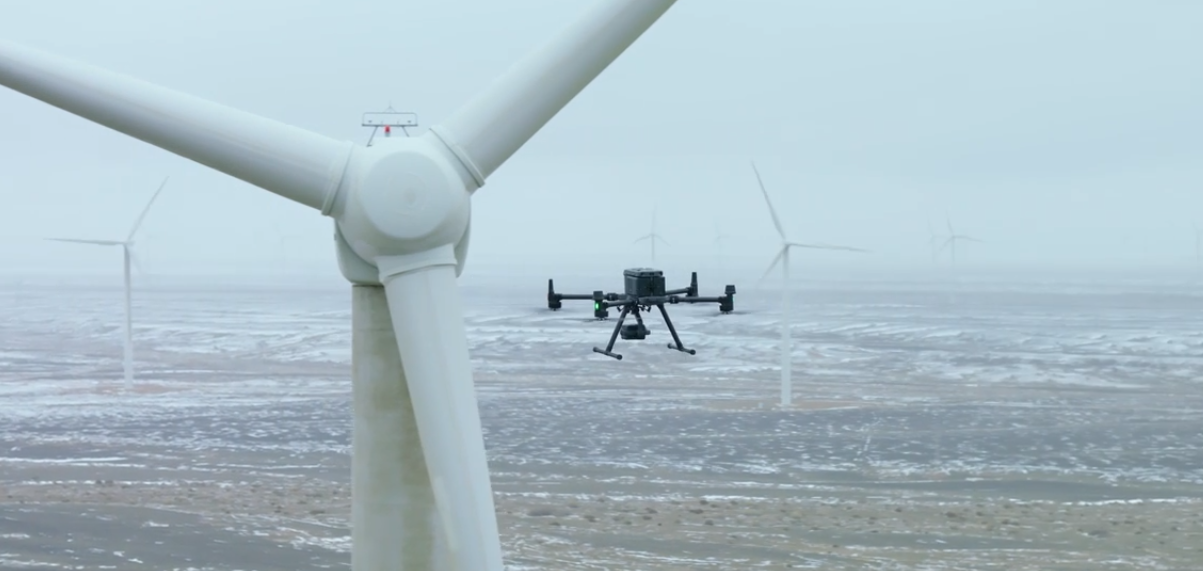

The DJI O3 Enterprise transmission system in the M350 RTK represents a significant advancement in drone technology. It provides users with a reliable and efficient transmission solution for their professional drone operations. Whether it's conducting inspections, aerial surveys, or other mission-critical tasks, the M350's improved transmission system empowers professionals to achieve their goals with more confidence and precision.
6. Integrated Arm Lock Indicator
Another safety enhancement in the DJI M350 RTK drone is the arm lock indicator. It helps prevent the drone from flying when the arm sleeves are not securely locked. This feature is absent in the M300 RTK model. Although it may not appear to be a significant improvement, the arm lock functionality plays a crucial role in enhancing flight safety and is considered a valuable upgrade.
7. New GNSS/GPS Chip: Enhanced Positioning
Both the M300 and M350 are GNSS aircraft capable of tracking satellites in the GPS, GLONASS, Galileo, and BeiDou constellations concurrently. However, the M350 incorporates an improved GNSS chip, offering better reception and the ability to track additional satellite signals, including GPS L5 and BeiDou B3.
The new GNSS chip integrated into the M350 sets it apart from its predecessor, the M300, with enhanced positioning capabilities. While both models can track multiple satellite constellations simultaneously, the improved chip in the M350 takes it a step further. It offers superior reception, allowing for more accurate and reliable positioning data.
Since the M350 can track additional satellite signals, it delivers increased precision in challenging environments. The inclusion of GPS L5 enables improved performance in urban areas, where signal reflections and interference are more prevalent. BeiDou B3, on the other hand, enhances the system's compatibility with the BeiDou satellite constellation, ensuring global coverage and improved positioning accuracy.
The improved GNSS chip in the M350 opens up new possibilities for professionals in various industries. For example, surveyors can benefit from the enhanced accuracy and reliability when collecting geospatial data. Search and rescue operations can utilize the improved positioning capabilities for precise location tracking. Additionally, industries such as construction and agriculture can leverage the upgraded chip to optimize workflows and enhance productivity.


8. New Aircraft and Battery Cases: Enhanced Portability
The DJI M350 RTK introduces improvements in aircraft and battery cases, enhancing portability for users. The new M350 hard case and BS65 battery station are designed to be smaller and more convenient compared to the M300 kit. The M350 hard case, which is 31% smaller than its predecessor, features four universal wheels that allow for easier rolling during travel. Despite its reduced size, the M350 hard case can accommodate two payloads simultaneously, providing versatility for different mission requirements.
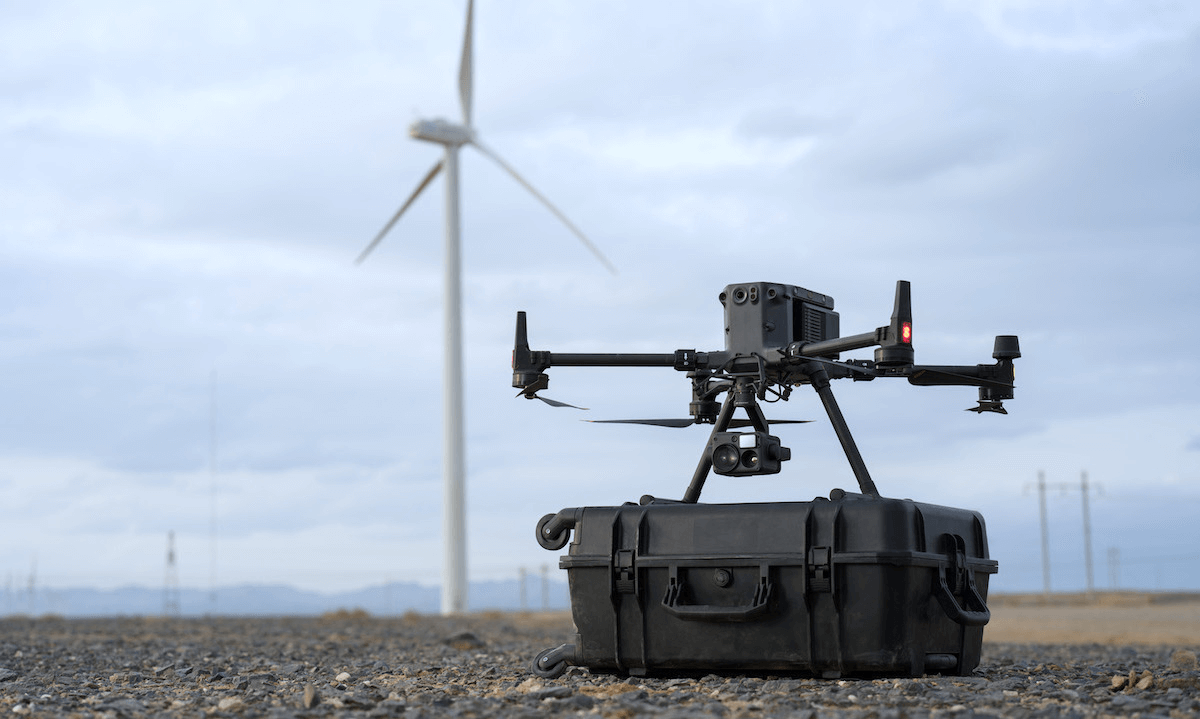

Additionally, the BS65 battery station included with the M350 RTK offers enhanced portability. It has the capacity to hold eight TB65 batteries and four WB37 batteries, streamlining transportation to and from job sites. The compact design and efficient battery storage of the BS65 battery station contribute to the overall convenience and ease of use of the M350 RTK.
These enhancements in aircraft and battery cases make the M350 RTK a more travel-friendly option for professionals in various industries. Whether it's for on-site inspections, aerial surveys, or other mission-critical tasks, the improved portability of the M350 RTK ensures that users can easily transport their equipment and deploy it in different locations. With the smaller hard case and the efficient battery station, professionals can focus on their work without the added hassle of bulky equipment and complex transportation logistics.
Similarities
Both the M350 and M300 are advanced enterprise drones, sharing several similarities that make them versatile and compatible with various applications. These include:
- Support for DJI's Zenmuse payloads, which are widely used in different industries. This compatibility allows users to leverage the same payloads across both drone models, providing flexibility and convenience.
- Both use the RC Plus controller, expanding the control options for pilots (M300 just needs a firmware update). This controller, which comes standard with the M350, offers advanced features and capabilities to enhance the flying experience. By supporting the same controller, both drones ensure a seamless transition for pilots familiar with the M300, while also providing an improved controller option for new users.
- The M300 and M350 are designed to share batteries and battery stations through firmware updates. This means that operators can use the same batteries and charging stations for both drone models, reducing the need for additional equipment and streamlining battery management. It provides a cost-effective solution and ensures compatibility across the fleet.
- Propellers and third-party payloads compatible with the M300 can also be used with the M350. This allows users to leverage their existing accessories and take advantage of the wide range of compatible options available for the M300. It provides flexibility and expands the capabilities of the M350, making it a versatile choice for professionals in various industries.


Final Thoughts – Which is The Better Drone?
The M350 builds upon the solid foundation of the M300, introducing a range of upgrades that enhance its capabilities. While existing M300 owners may not rush to replace their drones with the M350, those in the market for a new Enterprise platform will find it hard to resist the M350's suite of improvements.
The M350 offers enhanced dust protection, a superior remote controller, improved visibility, upgraded batteries, advanced transmission capabilities, better positioning, and enhanced portability. It presents a compelling choice for professionals seeking an enterprise-grade drone solution.

